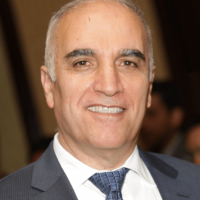Overview
Highway transportation is the most common mode of transport in the U.S. for the movement of goods and services, as it provides quick delivery of shipments traveling short distances compared to other modes of transportation. The Federal Highway Administration (FHWA) regulates the truck weights on the National Highway System (NHS). The truck weight data from the weigh-in-motion (WIM) stations in New York City shows that the average daily number of overweight (OW) trucks and the extent of the OW tonnage in New York City are significantly higher than in any other region. The substantial daily OW trucks adversely impact the structural integrity of many bridges. Based on the previous study, the upper percentile of the number of OW trucks and their extent (OW tonnage) has been increasing over the last decades.
In particular, the triple cantilever section of the Brooklyn-Queens Expressway (BQE) has been suffering from significant deterioration due to environmental conditions and existing substantial OW trucks (NYCDOT BQE, 2021). This 1.5-mile section of the BQE was built in the 1940s and 1950s under multiple construction contracts. Since then, this structure has only received minimal rehabilitation. Thus, the New York City Department of Transportation (NYCDOT) has a plan to rehabilitate the bridge in the next decades. However, it is not clear how to maintain a safe and efficient regional corridor for the movements of goods and services until the rehabilitation project starts. One key element for the safe corridor is to minimize the OW trucks by enforcing them efficiently if feasible.
The team has been collaborating with NYCDOT to establish testbeds along the BQE corridor to answer this concern. To this end, the team established one testbed at the north portion of the triple cantilever of the BQE between Brooklyn Bridge and Manhattan Bridge. n this proposed research, the team will work with NYCDOT to establish another testbed at the south portion of the BQE near Summit St. The second testbed will be equipped with WIM and ALPR systems for all six (6) lanes. Moreover, the team will work with NYCDOT to develop a plan to expand the network of WIM stations across NYC for future implementation.
Research Objectives
The main objective is to establish the second testbed for automated OW enforcement. The team will develop the drawing for the testbed, install Quartz sensors to measure the WIM data and ALPR cameras to identify the license plate and/or USDOT number, and evaluate and validate the performance of the integrated system. Another goal is to develop a framework to evaluate the infrastructure resilience regarding the overloading caused by vehicles using the network of WIM systems across NYC. This will benefit agencies in making decisions regarding investments and planning.






